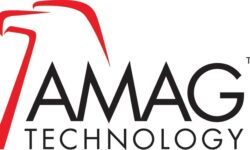Guide to Building a Better, Wiser Security Workforce
Find out how the Electronic Security Association (ESA) aims to improve workforce development.

Regardless of size, geography or niche, security companies routinely lament about the hard time they have finding enough qualified candidates in a variety of capacities to fill open positions within their organizations. The U.S. is currently suffering from a shortage of skilled trades-people, such as electricians, technicians, call-center operators and other positions.
In Security Sales & Integration‘s most recent Operations & Opportunities Report, responding integrators selected better training/education for both the No. 1 way to increase profits and reduce costs, as well as identifying employee performance as the single greatest boost to their companies’ bottom lines. And, SSI‘s annual Installation Business Report indicated a shortage of technicians as being the second leading business concern among security company owners, operators and managers.
There’s no doubt the security industry is struggling with a skills gap created by the rapid advancement in technology and consumer demand of new products and services that are relatively “new” to the industry. In addition to the skills gap, this country is faced with an aging workforce. According to the Pew Research Center, roughly 10,000 Baby Boomers will turn 65 today, and about 10,000 more will cross that threshold every day for the next 19 years.
RELATED: Check Out New Opportunities on the SSI Job Board
The work age demographic shift in this country is real and is growing. According to a survey by Manpower Group, “2012 Talent Shortage Survey,” 53% of skilled-trade workers in the U.S. were 45 years and older and 18.6% were between the ages of 55 and 64. Contrast those numbers with the overall labor force, where 44% of workers were at least 45 years old and 15.5% of jobs were held by the age 55-64 demographic. Skilled trades were the hardest spots to fill in 2012, according to the study, followed by engineers and IT staff.
These factors are creating the perfect storm, and it’s brewing in epic proportions. The security industry, like so many others, has to find ways to attract and keep younger workers, retain and retrain its current workforce, and plan for the future by adding new skills, such as those prevalent in information technology (IT), networking and other service disciplines. Thus the Electronic Security Association‘s (ESA) Industry Advisory Group (IAG) – recently formed to tackle key industry issues – is focusing on workforce development as one its most urgent initiatives.
Group Targets Workforce Woes
IAG aims to sound the views of top executives from high-volume integration companies on the industry’s top issues, opportunities and challenges. The group also analyzes key matters brought to it by the association and provides recommendations for action to ESA’s board and executive committee.
At 2014’s ESA Leadership Summit, the group met to discuss the most important issues facing the industry. They identified workforce development as a critical issue for their businesses and the industry at large. The group continued to meet throughout the year to formalize the project with the goal of promoting the security industry as an exciting and desirable career choice for the next generation, technical talent, sales talent and returning veterans.
A smaller group of individuals within the IAG was set up and has been working to develop tools and resources that will be used to reach outside of the security industry to raise awareness of the profession and promote it as a viable career choice.
ASG Security CEO Joe Nuccio, an inductee of SSI‘s Industry Hall of Fame and a member of the publication’s editorial advisory board, chairs the IAG, and Select Security President Steve Firestone is the group’s vice chair. They are committed to working with other members of the IAG to develop comprehensive resources designed to attract new talent and educate potential hires on the benefits of working in electronic security.
“Every business owner should be considering how to attract new talent or encourage family members to stay with the company,” says Firestone. “This is an industry driven by manufacturers moving to an IT environment. Many of our members have a workforce unskilled in that area, and new people coming into the industry have to be trained in alarm technologies. We want to be looked at by the next generation as a cool industry to be part of.”
Firestone says the IAG’s goals are to create tools and collateral that companies can use to implement plans and strategies in-house.
If you enjoyed this article and want to receive more valuable industry content like this, click here to sign up for our FREE digital newsletters!

Security Is Our Business, Too
For professionals who recommend, buy and install all types of electronic security equipment, a free subscription to Commercial Integrator + Security Sales & Integration is like having a consultant on call. You’ll find an ideal balance of technology and business coverage, with installation tips and techniques for products and updates on how to add to your bottom line.
A FREE subscription to the top resource for security and integration industry will prove to be invaluable.







